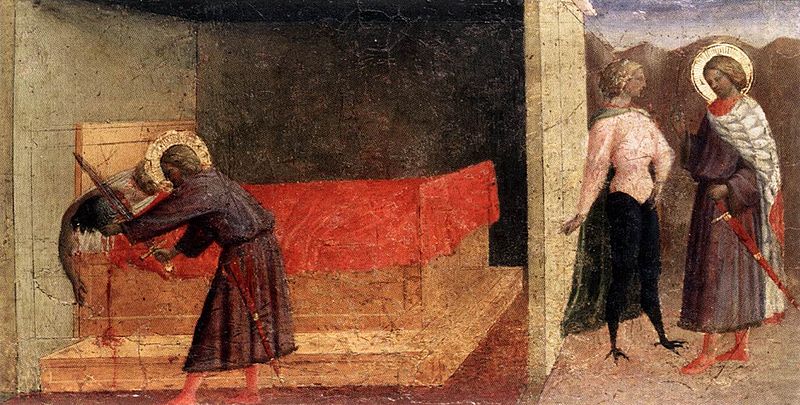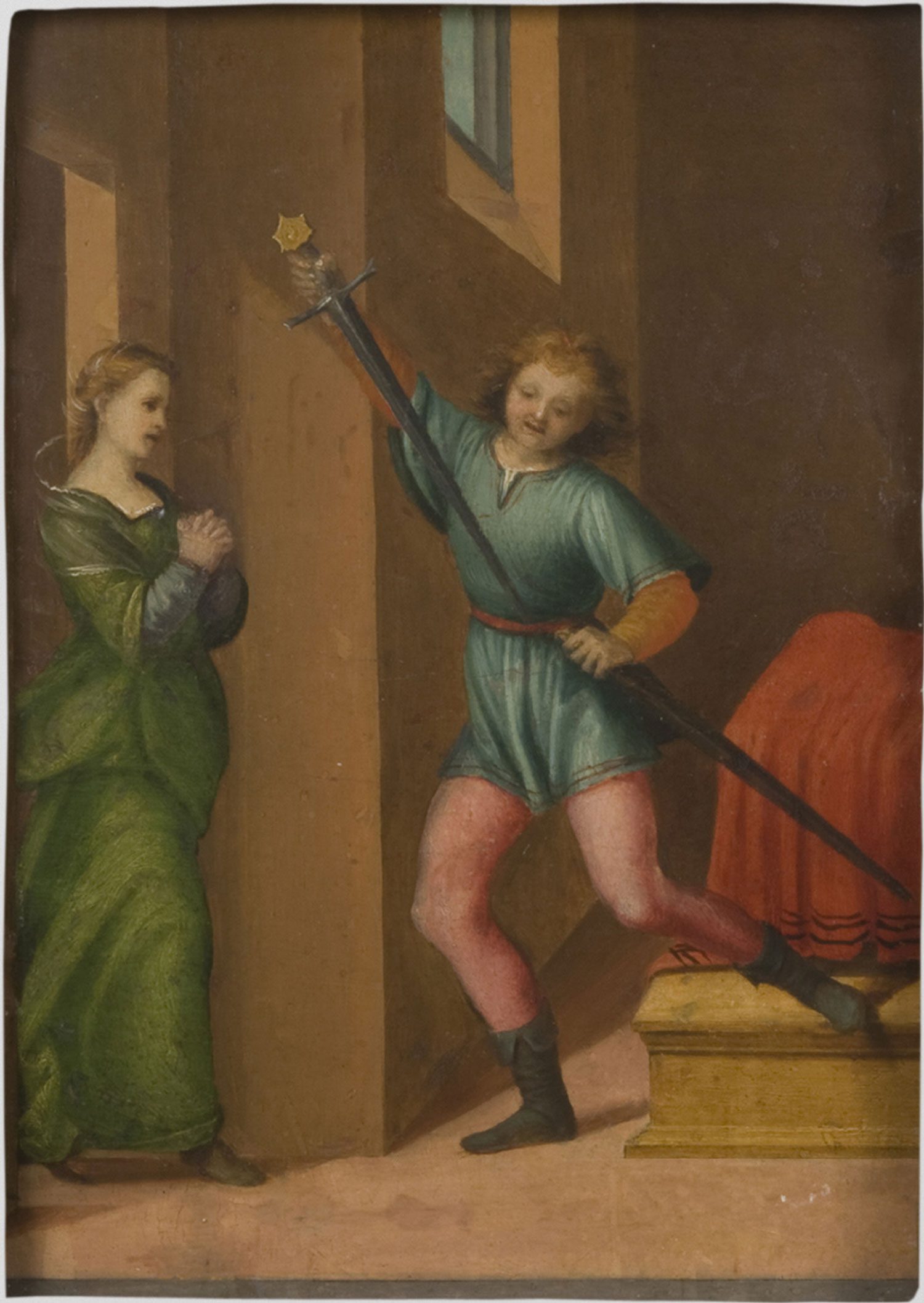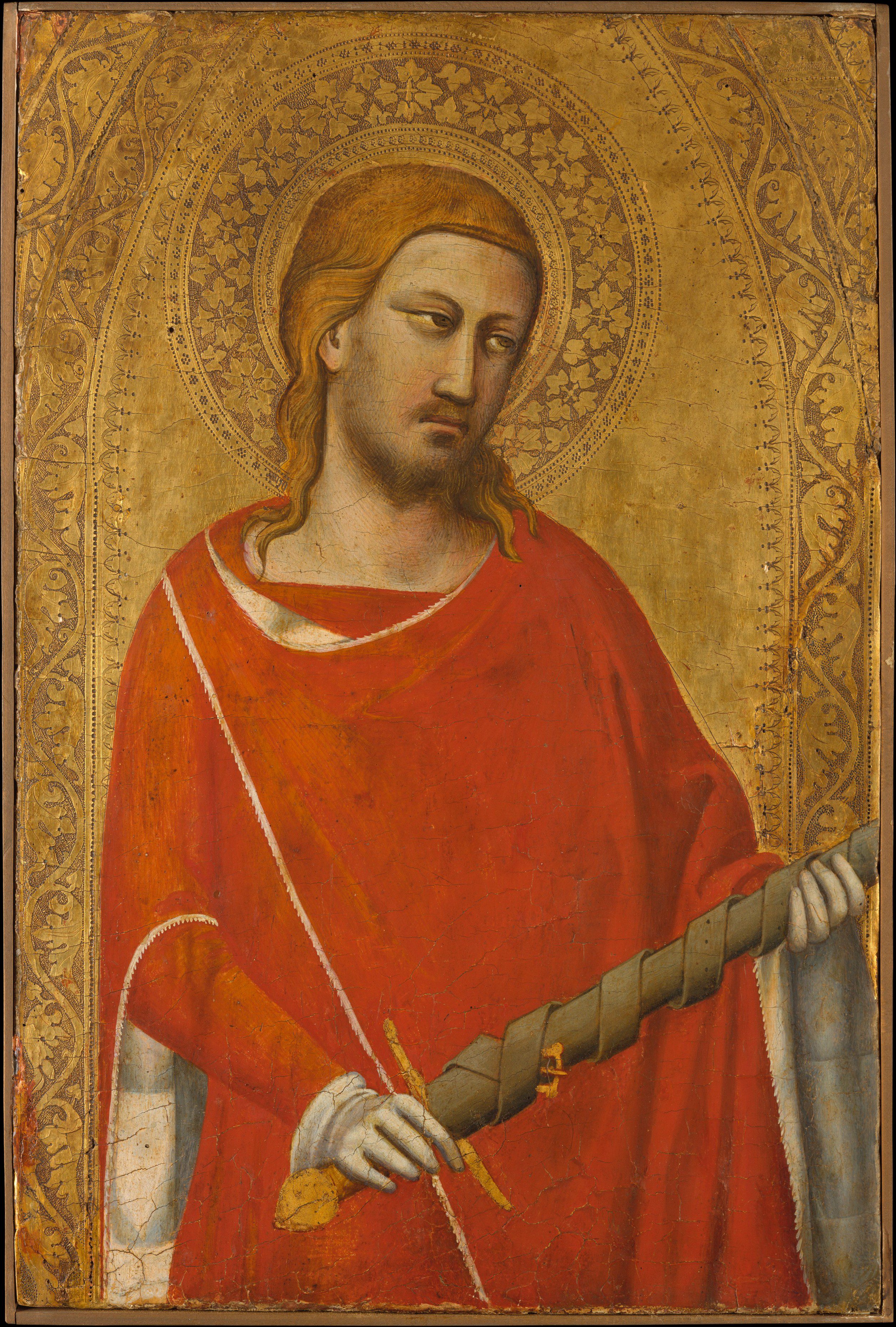Sally Metzler
Chicago, Illinois, United States


The Italian Renaissance artist Franciabigio has illustrated a horrendous crime of passion (fig. 1). He depicted the moment when Saint Julian, consumed with false jealously, killed his parents—by mistake! A disguised devil had told Julian that his wife was in bed with a lover, but in fact the couple were his parents, resting after an arduous journey in search of their long-lost son. The painting shows Julian sheathing his sword, his wife entering the room, and thus marking the precise moment Julian realized his fatal error.
The parricide of Saint Julian did not come as surprise to his family. Like in the story of Oedipus, Julian’s father had a dream on the night of Julian’s birth that his young son would grow up and kill his parents. According to legend, either a stag or Julian’s mother later revealed the dreadful prediction to him. Distraught, Julian leaves home, distancing himself from his parents and the potentially explosive situation. He wanders for fifty days and meets a wealthy Galician woman, whom he marries.
Twenty years later, Julian’s parents come searching for him, and discover his wife outside a church where they were praying. She explains that Julian is away hunting, but invites them home to rest, knowing Julian would appreciate her kindness towards them. But rather than happiness awaiting his return, tragedy ensues. The devil deceitfully tells Julian that his wife is entertaining a lover in their bed. Full of rage, Julian storms home and without pausing to look who is sleeping the bed, beheads his parents. The prediction on his birth has come true.
Grief-stricken, Julian resolves to pay penance and builds a hospital either in Provence or possibly near the Italian town of Macerta. Some legends recount he erected seven hospitals and twenty-five homes for the wayfaring poor. There are also several versions to the aftermath of his repentance. In one, a leper visits him, asking for shelter. Julian complies and shares his only bed; thereafter Christ reveals he has disguised himself as the leper, and announces to Julian that he is now absolved. This detailed, histrionic legend is fraught with uncertainty—even Julian’s country of birth is disputed: France, Belgium, or Italy?

But what is for certain is Franciabigio’s charming image of Julian now in the collection of the Philadelphia Museum of Art (fig. 1), an elegant representation employing typical stylistic tendencies espoused by artists favoring the late Renaissance style of Mannerism, wherein the aesthetic outcome and overall effect subsumes actual physical and emotional reality. Here Julian’s lithe figure emulates more the action of a ballet dance than violent tragedy.
Franciabiagio’s fame was eclipsed by his more renowned colleague Andrea del Sarto (1486–1531), with whom he shared a studio in Florence, but Franciabigio was nonetheless an accomplished painter, and his works today can also be found in the Uffizi and Louvre museums.
Franciabigio was not the first artist to bring Saint Julian to life in art. Centuries earlier, the Florentine Taddeo Gaddi (active ca. 1334- died 1366) focused on the youthful, handsome demeanor of the saint (fig. 2). In Gaddi’s painting, now in the collection of the Metropolitan Museum of Art, Julian brandishes his sword more as an attribute than weapon of irrevocable accident. Gaddi’s image is static. By contrast, Masolino da Panicale’s panel brims with narrative action, illustrating Julian’s heinous, unintended parricide (see as shown above). Painted around sixty years after Gaddi’s Saint Julian, the fragment of a predella panel shows two scenes simultaneously; on the right, the devil (disguised as a woman) ignites Julian’s jealousy by telling him his wife has betrayed him. The left side shows the devil’s work, as Julian hovers over the sumptuous red-draped bed, delivering the fateful blows to his own parents. The action is coarse and unapologetically gruesome. A gold-haloed Julian bends slightly, hacks off the head of his first victim, and the blood pours down the side of the bed. Comparing the three works, Franciabigio’s strikes one as the most subtle and advanced interpretation of physical action and emotional nuance, a befitting tribute to the complicated and tragic life of Saint Julian the Hospitaler.
SALLY METZLER, PhD, interned at the Alte Pinakotek in Munich, obtained her PhD in Art History from Princeton University, and worked at the National Gallery in Washington DC and the Cummer Museum in Jacksonville, Florida. She was director of the D’Arcy Museum of Loyola University in Chicago and in 2014 curated an exhibition on Bartholomeus Spranger at the Metropolitan Museum of Art in New York.
Highlighted in Frontispiece Summer 2015 – Volume 7, Issue 3

Leave a Reply